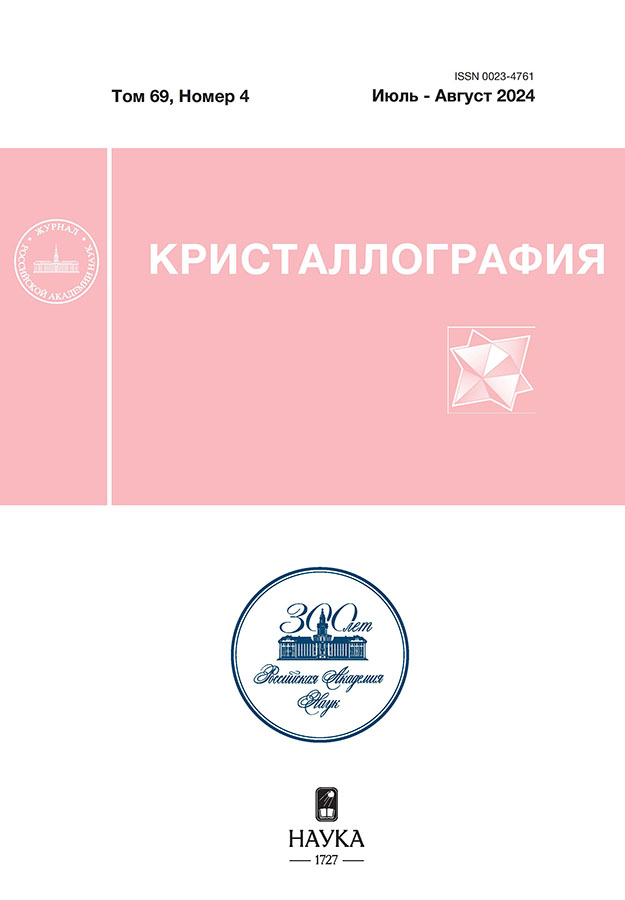Thin-film polydiacetylenes of a stable blue phase based on symmetrical and unsymmetrical diacetylene N-arylcarbamates
- Авторлар: Alekseev А.S.1, Vyaz’min S.Y.2, Ivanov A.В.1, Klechkovskaya V.V.3, Lukasov М.S.3
-
Мекемелер:
- A. M. Prokhorov General Physics Institute of the Russian Academy of Science
- Zh. I. Alferov Federal State Budgetary Institution of Higher Education and Science Saint Petersburg National Research Academic University of the Russian Academy of Science
- NRC “Kurchatov Institute”
- Шығарылым: Том 69, № 4 (2024)
- Беттер: 652-660
- Бөлім: ПОВЕРХНОСТЬ, ТОНКИЕ ПЛЕНКИ
- URL: https://ter-arkhiv.ru/0023-4761/article/view/673154
- DOI: https://doi.org/10.31857/S0023476124040118
- EDN: https://elibrary.ru/XCJDFP
- ID: 673154
Дәйексөз келтіру
Аннотация
The conditions and features of the formation of Langmuir monolayers of symmetrical and asymmetrical diacetylene N-arylcarbamates and the structural organization of Langmuir-Schaefer films based on them were studied. Photopolymerization of monolayer solid films of two types of molecules was monitored using absorption spectroscopy and showed the transition of diyne molecules to the blue phase polydiacetylene state. The efficiency of the solid-phase topochemical polymerization reaction in a film of symmetrical diynes turned out to be 5 times higher than in a film of asymmetrical diyne molecules. The morphology of monolayer surfaces before and after UV irradiation was studied using scanning electron microscopy.
Толық мәтін
Авторлар туралы
А. Alekseev
A. M. Prokhorov General Physics Institute of the Russian Academy of Science
Хат алмасуға жауапты Автор.
Email: alexanderalekseev@yandex.ru
Ресей, Moscow
S. Vyaz’min
Zh. I. Alferov Federal State Budgetary Institution of Higher Education and Science Saint Petersburg National Research Academic University of the Russian Academy of Science
Email: alexanderalekseev@yandex.ru
Ресей, St. Petersburg
A. Ivanov
A. M. Prokhorov General Physics Institute of the Russian Academy of Science
Email: alexanderalekseev@yandex.ru
Ресей, Moscow
V. Klechkovskaya
NRC “Kurchatov Institute”
Email: alexanderalekseev@yandex.ru
Shubnikov Institute of Crystallography of Kurchatov Complex of Crystallography and Photonics
Ресей, MoscowМ. Lukasov
NRC “Kurchatov Institute”
Email: alexanderalekseev@yandex.ru
Shubnikov Institute of Crystallography of Kurchatov Complex of Crystallography and Photonics
Ресей, MoscowӘдебиет тізімі
- Wegner G. // Z. Naturforsch. 1969. B. 24. S. 824. https://doi.org/10.1515/znb-1969-0708
- Tieke B. // Adv. Polymer Sci. 1985. V. 71. P. 79.
- Arslanov V.V. // Adv. Colloid Interface Sci. 1992. V. 40. P. 307. https://doi.org/10.1016/0001-8686(92)80080-H
- Jelinek R., Ritenberg M. // RSC Adv. 2013. V. 3. P. 21192. https://doi.org/10.1039/c3ra42639d
- Benten H., Mori D., Ohkita H., Ito Sh. // J. Mater. Chem. A. 2016. V. 4. P. 5340. https://doi.org/10.1039/c5ta10759h
- Chen X., Zhou G., Peng X., Yoon J. // Chem. Soc. Rev. 2012. V. 41. P. 4610. https://doi.org/10.1039/c2cs35055f
- Qian X., Städler B. // Chem. Mater. 2019. V. 31. № 4. P. 1196. https://doi.org/10.1021/acs.chemmater.8b05185
- Fang F., Meng F., Luo L. // Mater. Chem. Front. 2020. V. 4. P. 1089. https://doi.org/10.1039/c9qm00788A
- Yu Zh., MuYu C., Xu H. et al. // Polym. Chem. 2023. V. 14. P. 2266. https://doi.org/10.1039/d3py00213F
- Roberts G. Langmuir-Blodgett Films. Plenum Press, 1990. P. 425.
- Tieke B., Lieser G., Wegner G. // J. Polym. Sci. Polym. Chem. Ed. 1979. V. 17. P. 1631.
- Tamura H., Mino N., Ogawa K. // Thin Solid Films. 1989. V. 179. P. 33.
- Patel G.N., Khanna Y.P., Ivory D.M. et al. // J. Polym. Sci. A. 1979. V. 17. P. 899. https://doi.org/10.1002/pol.1979.180170513
- Zhong L., Zhu X., Duan P., Liu M. // J. Phys. Chem. B. 2010. V. 114. P. 8871. https://doi.org/10.1021/jp1020565
- Alekseev A., Ihalainen P., Ivanov A. et al. // Thin Solid Films. 2016. V. 612. P. 463. https://dx.doi.org/10.1016/j.tsf.2016.06.044
- Mino N., Tamura H., Ogawa K. // Langmuir. 1991. V. 7. P. 2336.
- Alekseev A.S., Domnin I.N., Ivanov A.B. // Bulletin of the Lebedev Physics Institute. 2021. V. 48. № 11. P. 337. https://doi.org/10.3103/S1068335621110026
- Kruchinin V.N., Repinsky S.M., Sveshnikova L.L. et al. // Thin Solid Films. 1994. V. 240. P. 131.
- Marinichev A.N., Vyaz’min S. Yu., Domnin I.N. // Russ. J. Appl. Chem. 2005. V. 78. № 10. P. 1662.
- Alekseev A., Ihalainen P., Ivanov A. et al. // Thin Solid Films. 2018. V. 645. P. 108. https://dx.doi.org/101016/j.tsf.2017.10.018
- Kim T., Ye Q., Sun I. et al. // Langmuir. 1996. V. 12. P. 6065.
- Vyaz’min S.Y., Berezina S.E., Remizova L.A. et al. // Russ. J. Org. Chem. 2002. V. 38. P. 775.
- Alekseev A., Ihalainen P., Ivanov A. et al. // Thin Solid Films. 2016. V. 612. P. 463. https://dx.doi.org/10.1016/j.tsf.2016.06.0
- Alekseev A.S., Domnin I.N., Ivanov A.B., Tereschenko N.A. // Mendeleev Commun. 2018. V. 28. P. 409. https://doi.org/10.1016/j.mencom.2018.07.0.23
- Alekseev A.S., Ivanov A.B., Klechkovskaya V.V. et al. // Rev. Adv. Chem. 2023. V. 13. № 3. P. 265. https://doi.org/10.1134/S263482762360010X
Қосымша файлдар














